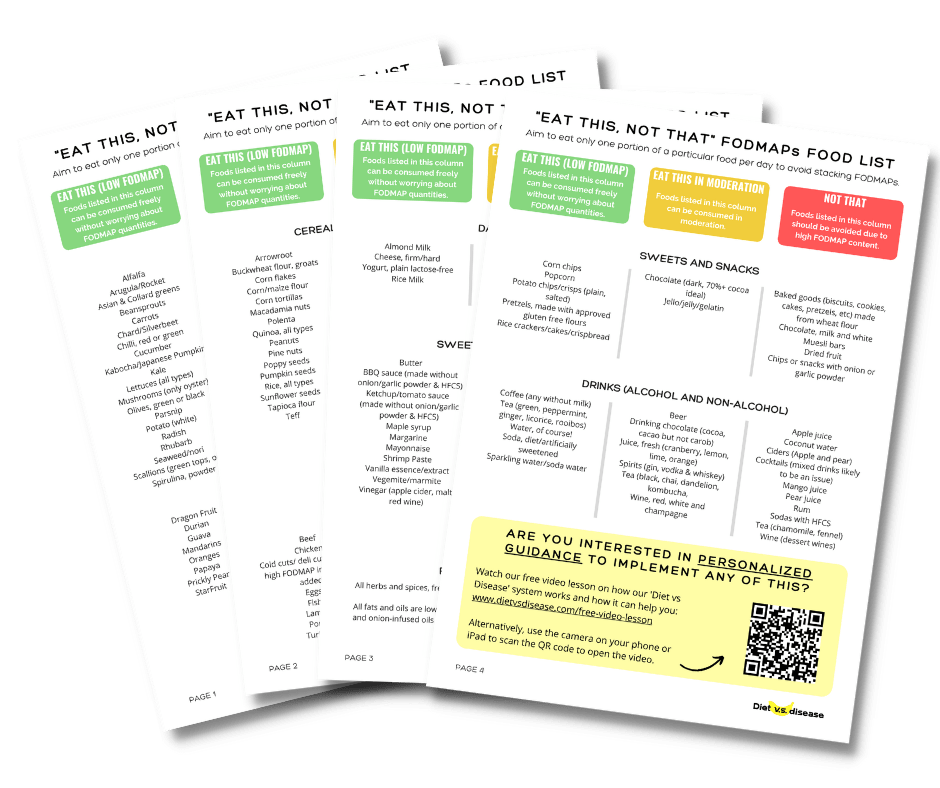Have you been searching for a list of safe vegetables you can have on the low FODMAP diet?
Here’s a list of low FODMAP vegetables to eat and high FODMAP vegetables to avoid.
Important
Aim to eat moderate serving sizes, even if it’s low FODMAP. Large portions or multiple servings of a low FODMAP food can still equal a high FODMAP load.
Below you have the option to download a complete PDF list for saving to your device or printing.
Low FODMAP Vegetables
- Alfalfa
- Arugula/Rocket
- Asian & Collard greens
- Aubergine/Eggplant
- Beans, green
- Beansprouts
- Beetroot (1/2 cup)
- Bell peppers/Capsicum
- Broccoli
- Brussels sprouts (2-4 sprouts)
- Cabbage
- Carrots
- Celery and celeriac
- Chard/Silverbeet
- Chilli, red or green
- Corn (1/2 cob max)
- Courgette/Zucchini
- Cucumber
- Edamame beans
- Fennel bulb or leaves
- Ginger and Galangal
- Kale
- Lettuce and Endive- all types
- Mushrooms- tinned, shimeji, oyster
- Okra
- Olives, green or black (15 small))
- Potato- regular
- Potato- sweet potato (1/2 potato)
- Pumpkin/Squash- kent/Japanese
- Pumpkin/Squash- butternut (1/2 cup)
- Radish
- Rhubarb
- Scallion/Spring onion (green tops)
- Seaweed/nori
- Snow peas/Mangetout (5 pods)
- Spaghetti squash (1 cup)
- Spinach, baby and English
- Tomatoes
- Turnip, Swede, Rutabagas
- Water chestnuts
- Yam
High FODMAP Vegetables
- Asparagus
- Artichokes
- Cauliflower
- Garlic
- Leek (white bit)
- Onions
- Mushrooms- all other types
- Peas
- Scallions / spring onions (white bit)
Would you like a full list of vegetables you can safely eat on a low FODMAP diet?

Tap the blue button below to download our “Eat This, Not That” list as well as additional resources for IBS and digestive issues (it’s free!)
